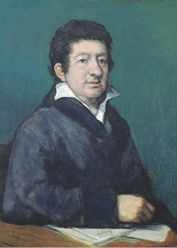38. Leandro Fernández de Moratín (1760-1828), ‘A Philanthropic Congregation’, 181161

Leandro Fernández de Moratín, the most famous Spanish dramatist of his time, published in 1811 an account of the auto-da-fé of 1610 in the village of Logroño.62 His commentary presents an ironic satire of the Inquisition and its cruelty.
Has the world ever known a more pious court than this? It had no rest until it had imprisoned, tortured, exiled, dispossessed, oppressed, excommunicated, flogged, hanged and burned all the wretched individuals that it had in its power. If they happened to perish in their dungeons, it would condemn their effigy instead, and it would burn their bones, and their forenames, and surnames and the name of their homeland, and inscribe them in great capital letters at the entrances to churches, so that they might be read by all those who could read […]. Let us not speak, then, of a tribunal, but rather of a philanthropic congregation.
61 Leandro Fernández de Moratín, Proceso a la brujería. En torno al Auto de Fe de los brujos de Zugarramurdi, Logroño: 1610, in his Comentarios de L. Fernández de Moratín bajo el pseudónimo de Ginés de Pasadilla, ed. De Manuel Fernández Nieto, Madrid: Editorial Tecnos, 1989, p. 178, n. 8.
62 Portrait of Fernández de Moratín by Francisco Goya (1824): https://commons.wikimedia.org/wiki/File:Francisco_de_Goya_-_Portrait_of_the_Poet_Moratín_-_Google_Art_Project.jpg







